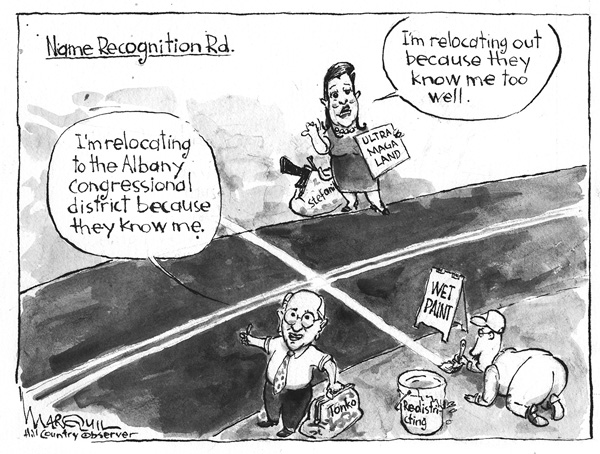Editorial June 2022
E D I T O R I A L
State’s new political map might help our democracy
It is a season of discontent for House Democrats from New York. In a difficult election season, they already were at risk of losing their majority in Washington. And lately they’ve been sniping at each other – even planning to run against each other – as they grapple with the fallout from a gerrymandering effort that backfired spectacularly.
Even the normally mild-mannered Rep. Paul Tonko was sounding exasperated in late May, fuming that he knows the Capital District better than some “post-grad from Pennsylvania.”
To be precise, a state judge appointed an academic expert, a post-doctoral fellow from Carnegie Mellon University in Pittsburgh, to redraw New York’s congressional and state Senate districts after ruling in late March that maps enacted earlier this year by the Legislature’s Democratic majority were hopelessly unfair.
As a story in this issue details, the expert’s new maps, which the court approved May 20, have scrambled the state’s political terrain -- with seemingly little regard for the political needs of current officeholders. So Tonko’s longtime home in Amsterdam will be inserted into a large swath of territory now represented by Republican Elise Stefanik, while Stefanik’s adopted hometown of Schuylerville will shift into a Democratic-leaning district made up mainly of Tonko’s current turf.
The new congressional map also creates two new tossup districts in the Hudson Valley south of Albany, neither of which has an incumbent currently. And in metro New York, the map sets up several clashes between incumbent Democrats.
By comparison, the maps approved by the Legislature in February were designed to protect Democratic incumbents – and to make it possible to flip some seats now held by Republicans. Several analysts predicted the Legislature’s maps would have yielded a congressional delegation with 22 Democrats and only four Republicans, compared with the current Democratic margin of 19 to 8.
Worse, from the standpoint of healthy democracy, only two of the state’s 26 congressional districts under the Legislature’s plan would have been expected to yield competitive general election contests. Under the maps that have been in place for the past decade, there typically have been four districts with competitive races (i.e., with winning margins of less than 10 percent) in each election cycle, already a pathetically low number.
In contrast, the new congressional map approved by the court last month is expected to yield 15 safe Democratic seats, three safe Republican seats -- and eight districts that could swing either way. For those who prefer elections to coronations, this is a big improvement over the status quo.
Many Democrats at this point fear any change that opens up new opportunities for Republicans, particularly at the federal level. They see their party as a bulwark against an authoritarian streak that has taken hold in the GOP since the Trump era. But the best way to preserve and protect democracy is by fostering meaningful, competitive election contests – not by using gerrymandering to create as many pre-ordained results as possible.
It’s too bad that the court’s new maps won’t set up a competitive district for Stefanik, who in the past few years has increasingly aligned herself with the most extreme elements in her party. But the Legislature’s maps would have kept her in a safely Republican district as well.
In the swing districts created by the new plan, both parties’ candidates will likely have to steer a moderate course to win. That could be the start of a cure for our current era of polarization.


